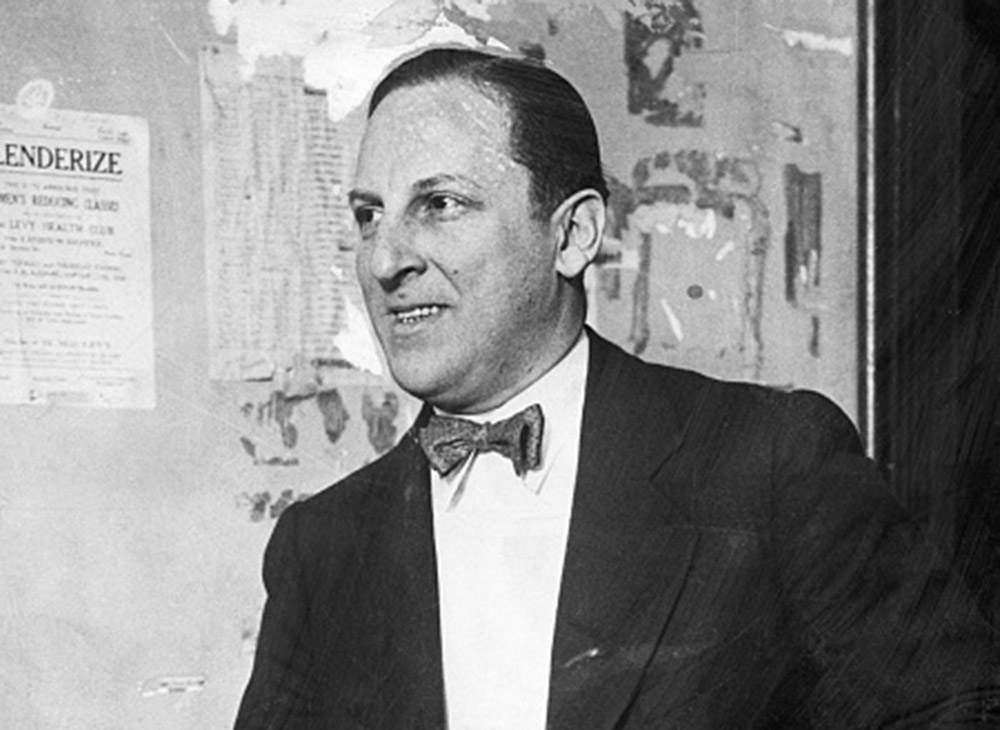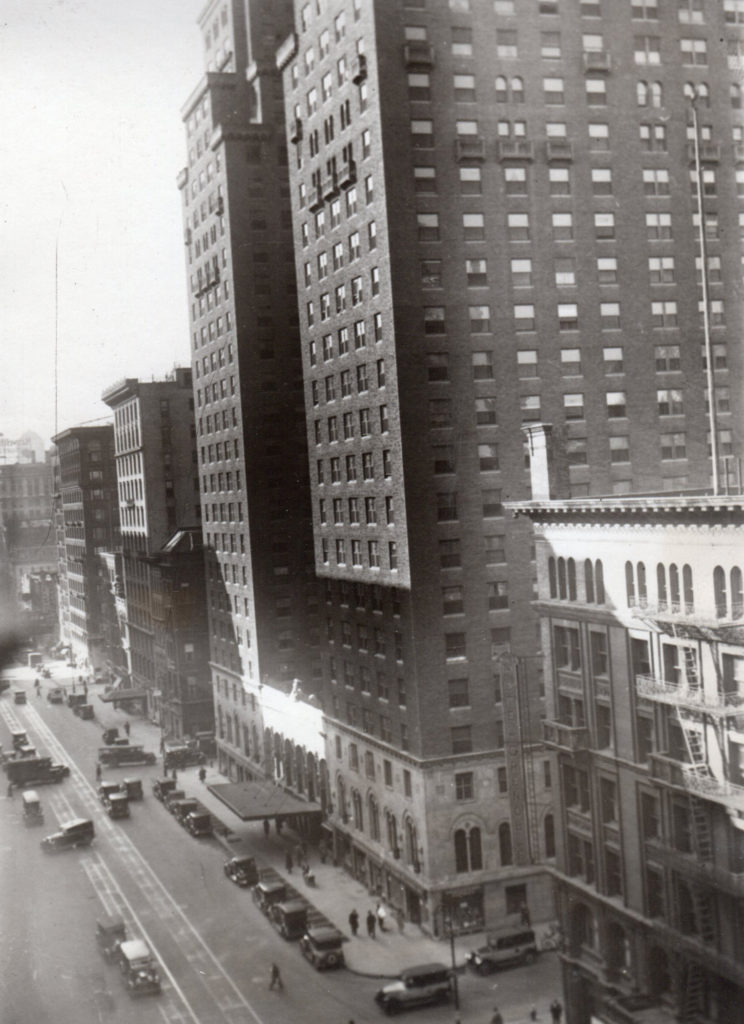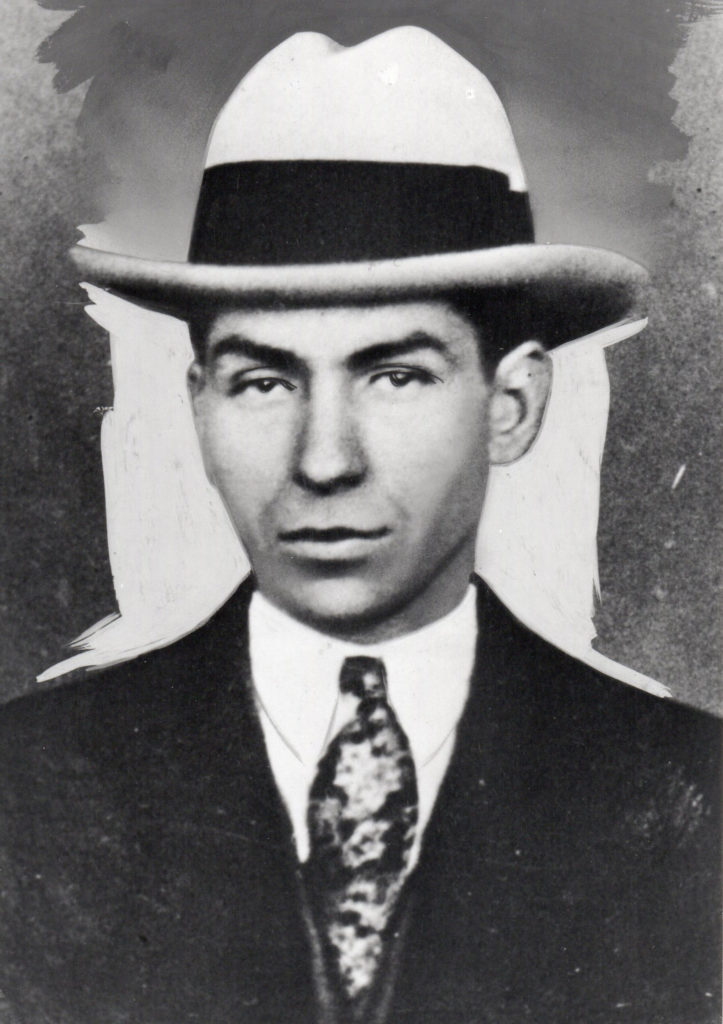Ninety years later, Arnold Rothstein murder still a mystery
Police, prosecutors failed to solve shooting death of the legendary Mob financier, gambler and mentor

Ninety years ago this week, with the dying breath of New York’s most provocative Mob entrepreneur, one of America’s great unsolved gangland mysteries was born.
On November 4, 1928, at 10:15 p.m., a telephone call came in to Lindy’s restaurant, on Broadway. The caller asked to speak with one of the establishment’s regulars. Arnold Rothstein excused himself from the table, took the call, returned moments later and handed a long-barreled, pearl-handled pistol to his associate, James Meehan. He parted ways with Meehan and ventured off to the Park Central Hotel, reportedly headed for Room 349 there.
Within an hour, Arnold Rothstein – the man known around town as “The Brain” and “The Big Bankroll” – took a violent jolt of hot lead to the abdomen. Hotel employees saw him stumbling and bleeding badly at a hotel service door before collapsing. An ambulance rushed him to Polyclinic Hospital, where surgeons struggled to remove the slug and perform a blood transfusion. New York Police Detective Patrick Floyd, a familiar face to Rothstein, tried to glean some information.

“Who shot ya, A.R.?” Floyd asked.
Rothstein, true to form, refused to name his assailant, replying, “You know me better than that, Paddy.”
The bullet that penetrated Rothstein’s belly (later traced to a .38-caliber revolver found on the street below the hotel) took a downward trajectory and settled deep into the bladder. The wound was painful and caused heavy internal bleeding. The deep location of the projectile in the body made extraction futile.
Rothstein died on November 6, but not before groggily signing a revised will, presented to him during a chaotic parade of visitors. His lawyer, Maurice Cantor, reportedly guided Rothstein’s hand to scrawl an “X” on the document. The will, adjusted from another will Rothstein had signed that March, allotted money to his assistant, Sidney Stajer, and Rothstein’s mistress, former Ziegfeld Follies dancer Inez Norton. It also gave Cantor five percent of the estate. The new will cut the share bequeathed to Rothstein’s wife, Carolyn, from one half in March to one third, while increasing Norton’s share to one sixth. The changes led to a brief legal challenge by Carolyn Rothstein, who contested the second will before settling the dispute. At the time of his death, Rothstein’s estate was allegedly worth from $1 million to $3 million (from $14 million to $42 million today based on inflation).
Just what happened in the last few hours of Rothstein’s life, and why New York law enforcement waited three weeks to conduct a thorough investigation after many of Rothstein’s paper records had been robbed, proved to be among many questions following his death and long after the murder trial ended. The still unsolved mystery was largely the result of epic fails by police and prosecutors, who may have been covering up to save prominent people from embarrassment.
Thomas Rice, a member of the New York State Crime Commission, wrote a scathing critique — extending across the entire front page of the Brooklyn Eagle newspaper on March 31, 1929 — of the handling of the Rothstein murder probe by police and New York District Attorney Joab H. Banton.
Banton charged Rothstein’s gambling friend George A. McManus with the murder. Rothstein was said to have told a witness at Lindy’s that McManus had called and summoned Rothstein to the Park Central Hotel, where McManus was checked into Room 349. Banton claimed McManus gunned Rothstein down there. At first, police promoted a pet theory on the motive. At a game of stud poker on September 8, Rothstein lost $200,000 and McManus $51,000 to other high-stakes gamblers. Rothstein put the loss on his tab, then refused to pay the gamblers, believing he was cheated. But police would abandon the poker debt idea. Without much evidence, Banton charged McManus, based in part on finding McManus’ coat in Room 349.

However, Rice observed that Banton had subsequently admitted that he had no evidence Rothstein even visited the hotel room. Rothstein was found mortally wounded at the Park Central’s service entrance, and may have been shot on the street, Rice wrote.
The shoddy police work resulted in the loss of perhaps hundreds of pages of Rothstein’s personal papers, documents that may have gone missing because they would have exposed Rothstein’s associations with various politicians, judges, bankers and film stars, according to Rice.
Rice quoted William A. Hyman, attorney for the Rothstein estate, who told reporters on 1928: “When Rothstein’s safe deposit boxes are opened, there will be a lot of suicides. Go put that in your papers.”
Rothstein’s influence remained strong even after his death. Before Prohibition, he famously served as mentor to teenage youths (and future big-time hoods) Frank Costello, Meyer Lansky and Charles “Lucky” Luciano. His close associates included a who’s who of top 1920s New York-area mobsters such as Louis “Lepke” Buchalter, Dutch Schultz, Phil Kastel, Waxey Gordon and Longy Zwillman. But Rothstein was not a Mob boss, nor necessarily even a mobster. Rather, he was a man who bestowed large loans to the criminal underworld, and kept up-and-coming gangsters, as well as politicians and police officers, on his payroll.
His death essentially became the catalyst for a two-tiered investigation. For New York Police, it was a murder mystery. The other investigation pointed to drug trafficking, based on hints that Rothstein pulled the strings of an international narcotics ring. Some government officials, notably Sara Graham-Mulhall, deputy commissioner of the New York State Department of Narcotic Drug Control, had been keeping tabs on Rothstein’s history of bailing out gangsters, particularly known dope dealers.
The inquiries would prove to be anything but cut and dried on either front. Rothstein knew things, knew people in high places, had investments in both the light and dark corners of business, and he kept printed records. But most of the documented evidence investigators thought they’d find in safes never materialized.
Rothstein’s known endeavors, such as gambling, real estate and bootlegging, barely scratched the surface of what he was really up to for more than a decade. As the zealots of law and order would quickly find out, his secrets were not easily cracked, not even when his former minions faced the choice of squealing or years in a dank prison cell. More than a few so-called “upstanding” citizens began shuddering at the thought of their names coming to light when Rothstein’s safes and safe deposit boxes were opened.
Although suspects and material witnesses were swiftly picked up for questioning (Nicky Arnstein, James Meehan, George McManus, Titanic Thompson, etc.), most were less than forthcoming and others were deemed “hostile,” such as Rothstein’s closest confidante, the drug trafficking, heroin-addicted and camera-shy Sidney Stajer, who warned inquiring reporters to “Get the hell out of here!” Ideas of why Rothstein was whacked ran wildly across the spectrum from his gambling debt to the suggestion that he took his own life.
Another mystery is just what Rothstein’s files, stored at various locations around the city, contained, who stole them and why. Just one day after Rothstein succumbed to his mortal wound, officers “happened” upon a couple of shady characters rifling through papers at Rothstein’s main office. Technically, the cops didn’t have anything to hold the men on and alas, off into the darkness they went. Who were these intruders and what were they looking for? Rothstein had employed both men, but not in a career anyone would list on a resume. Authorities identified them as George Uffner and Charles Lucania (years before his notoriety as “Lucky” Luciano). The former carried a reputation of gambler, dope peddler and pal of Rothstein. The latter, while lesser known at the time, had a rap sheet that included gun possession, narcotics and an association with another recognized Rothstein enforcer, Jack “Legs” Diamond.

Conspiracy theories filled the air. Uffner, Lucania and another former Rothstein bodyguard, Thomas ”Fatty” Walsh, were eventually picked up for questioning, but the trio’s adamant denials of any knowledge of the Rothstein murder or gang affiliations provided police with nothing useful.
“Rothstein never was the associate of gangsters,” Uffner insisted.
Nevertheless, agents investigating the narcotics angle did manage to track down some suspected incoming dope shipments linked to Rothstein that December. One government official proclaimed it as “the biggest drug ring in the United States.” The arrest of 53-year-old Joseph Unger, and the seizure of $2 million in hard drugs, could have been the missing link to both the murder mystery and the alleged drug cartel. Neither fully panned out, as Unger told police he’d “boil in oil” before giving up information.
The result of both the murder and narcotics cases left more questions than answers. Prosecutors couldn’t convict the primary murder suspect, McManus. Most of the testimony from witnesses was hazy at best. The Rothstein murder remains unsolved.
“I suspect A.R. and McManus were arguing, the latter was drunk and he or his bodyguard pulled out a gun to play tough and it went off,” says Patrick Downey, author of Gangster City: The History of the New York Underworld 1900-1935. “If they wanted him dead, they would have given him one or two more in the head. Also, I don’t think they would have summoned him to a popular hotel to kill him.”
The government did connect Rothstein as the financier behind many drug rings (dealing in cocaine, heroin and opium) both in the United States and abroad, but successfully incarcerated only a few of the many operatives. Again, it seemed some of these guys were well protected even after their boss’s death, including dope pushers such as Stajer, Uffner, Diamond and Abraham Stein. In fact, many of these globetrotting drug lords, Charles Lucania included, kept the gig going for several more years.
If the Rothstein murder and drug cartel calamity had any silver lining, at least from the government’s perspective, it was the relatively swift decision to create a department centralized to fight a war on drugs. The birth of the Federal Bureau of Narcotics in 1930, and the rise of its long-serving first commissioner, Harry J. Anslinger, were at least indirect, and arguably direct, results of the Rothstein cases.
Christian Cipollini is an organized crime historian and the award-winning author and creator of the comic book series LUCKY, based on the true story of Charles “Lucky” Luciano. Go to www.ganglandlegends.com.
Feedback or questions? Email blog@themobmuseum.org





